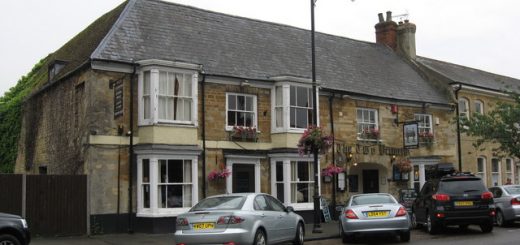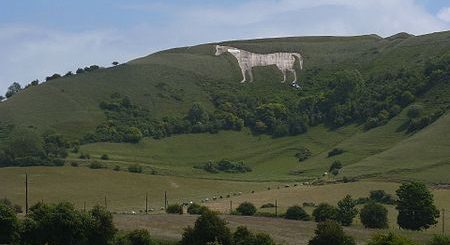Cadbury Castle
This large hillfort has a plethora of traditions attached to it, most notably that it is the site of the legendary Camelot, the stronghold of Arthur. There is a distinct possibility that the historical Arthur – probably a sixth century war leader – had his base here, as the Iron Age hillfort was reoccupied and refortified around this time.
 The castle – which covers an area of 18 acres – is a hillfort that had periods of broken occupation and use from the Iron Age to the reign of Ethelred II (Ethelred the Unready). There have been a number of archaeological excavations at the site, the first in 1890, when the Reverend James Bennett – who was the Rector of South Cadbury – carried out a number of digs, proving Iron Age occupation.
The castle – which covers an area of 18 acres – is a hillfort that had periods of broken occupation and use from the Iron Age to the reign of Ethelred II (Ethelred the Unready). There have been a number of archaeological excavations at the site, the first in 1890, when the Reverend James Bennett – who was the Rector of South Cadbury – carried out a number of digs, proving Iron Age occupation.
The most important archaeology was carried out between 1966 and 1970 by the ‘Camelot Research Committee’ led by Leslie Alcock. They found evidence of occupation during the Iron Age, with wooden houses constructed of wattle, wood and thatch, protected by defences on the enclosing ramparts. Evidence suggested that the Romans evicted the first Iron Age inhabitants after a siege in 70 AD, and for much of the Roman period the hillfort was abandoned. After the legions left Britain, and with the onset of the Dark Ages, the Hillfort was once again reoccupied, probably around 500AD.
According to historians the castle was most probably connected with the Durotriges, whose lands spread through Somerset and into parts of what is now Dorset.
It is possible that the castle served as a focal point for the leaders of the tribe, and may have been as close to what is now a capital.
![Photo: Joe D [CC BY-SA 1.0 (https://creativecommons.org/licenses/by-sa/1.0)], via Wikimedia Commons](http://www.mysteriousbritain.co.uk/wp/wp-content/uploads/2018/11/050326_073_somerset_cadbury_castle-300x225.jpg) In legend Cadbury Castle is the site of Camelot, and one of the hills under which Arthur and his men are said to sleep awaiting the allotted time to fight for the nation once again. In some stories the entrance to this cave is guarded by a giant Iron Gate, which opens once every seven years on Midsummer’s day to let Arthur and his warriors ride the night. They ride from Cadbury Castle to a spring near Sutton Montis church to water their weary horses. Here we may see an older tradition of the phantom wild hunt mingling with the legend of Arthur, and indeed Arthur is said to lead the wild hunt from the castle along a track, which was once known as King Arthur’s Lane.
In legend Cadbury Castle is the site of Camelot, and one of the hills under which Arthur and his men are said to sleep awaiting the allotted time to fight for the nation once again. In some stories the entrance to this cave is guarded by a giant Iron Gate, which opens once every seven years on Midsummer’s day to let Arthur and his warriors ride the night. They ride from Cadbury Castle to a spring near Sutton Montis church to water their weary horses. Here we may see an older tradition of the phantom wild hunt mingling with the legend of Arthur, and indeed Arthur is said to lead the wild hunt from the castle along a track, which was once known as King Arthur’s Lane.
The first reference to Cadbury being the site of Camelot is in the 16th century when the antiquary John Leland – the Antiquary to Henry VIII – mentioned it as “Camalat” according to local belief, and associated it with Arthur.
Whether Cadbury is the site of the sixth century warrior chieftain who fought back the Saxons and inspired the legend of Arthur is open to debate. From the available evidence the site was indeed occupied during this time and has a claim as good as any other Arthurian site in Britain.
Dragon Legend
An enormous winged dragon was said to fly nightly over the Exe Valley, lighting up the sky with its flaming breath. It flew back and forth between Dolbury Hill and Cadbury Castle guarding two hordes of treasure. A local saying goes…
“If Cadbury Castle and Dolbury Hill delven were
All England might plough with a golden share”
In this case no hero was forthcoming to do battle with the dragon. (The Dragon Legend was taken from an article by Richard Freeman)
Directions: Off the A303




Recent Comments